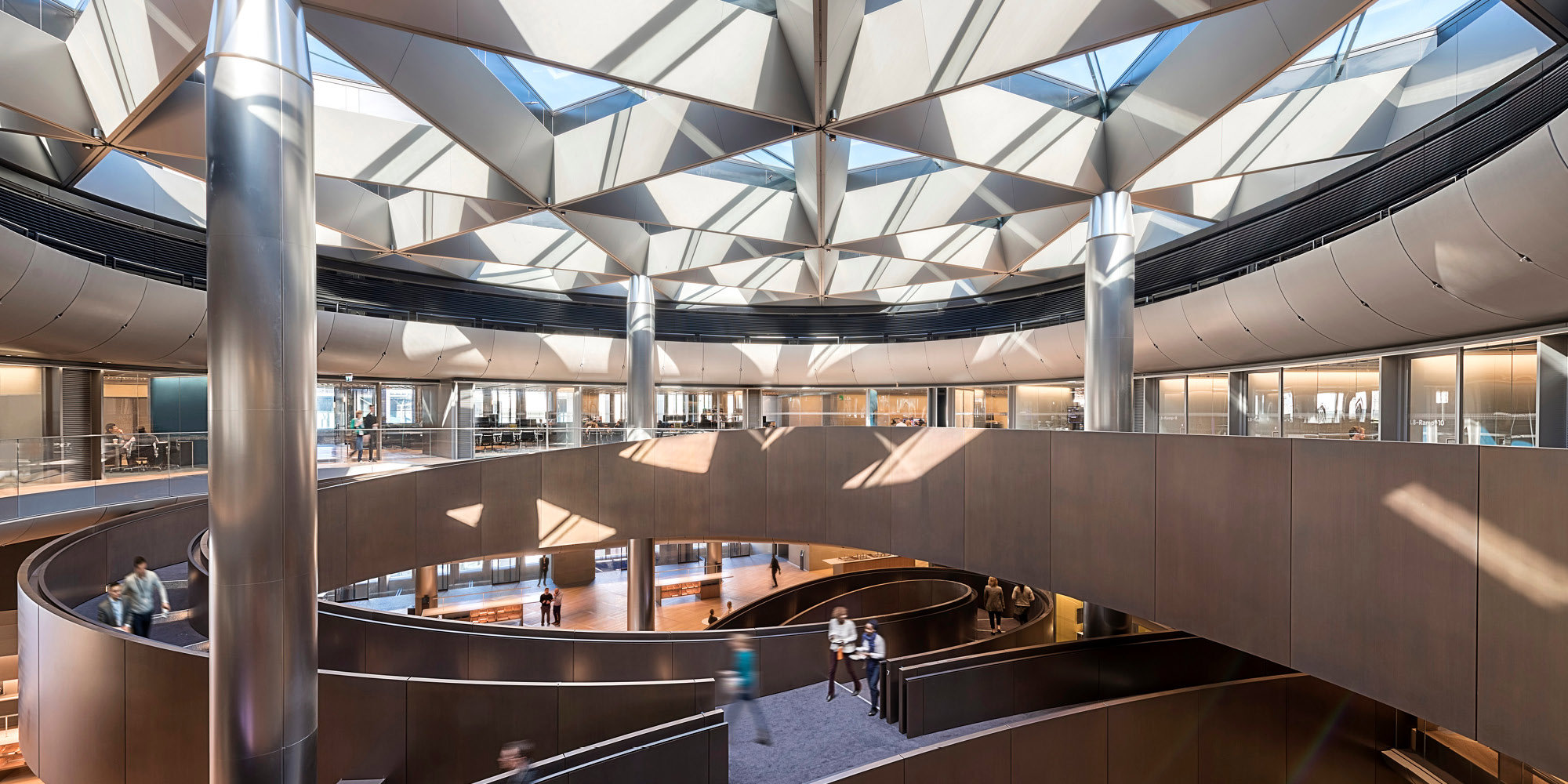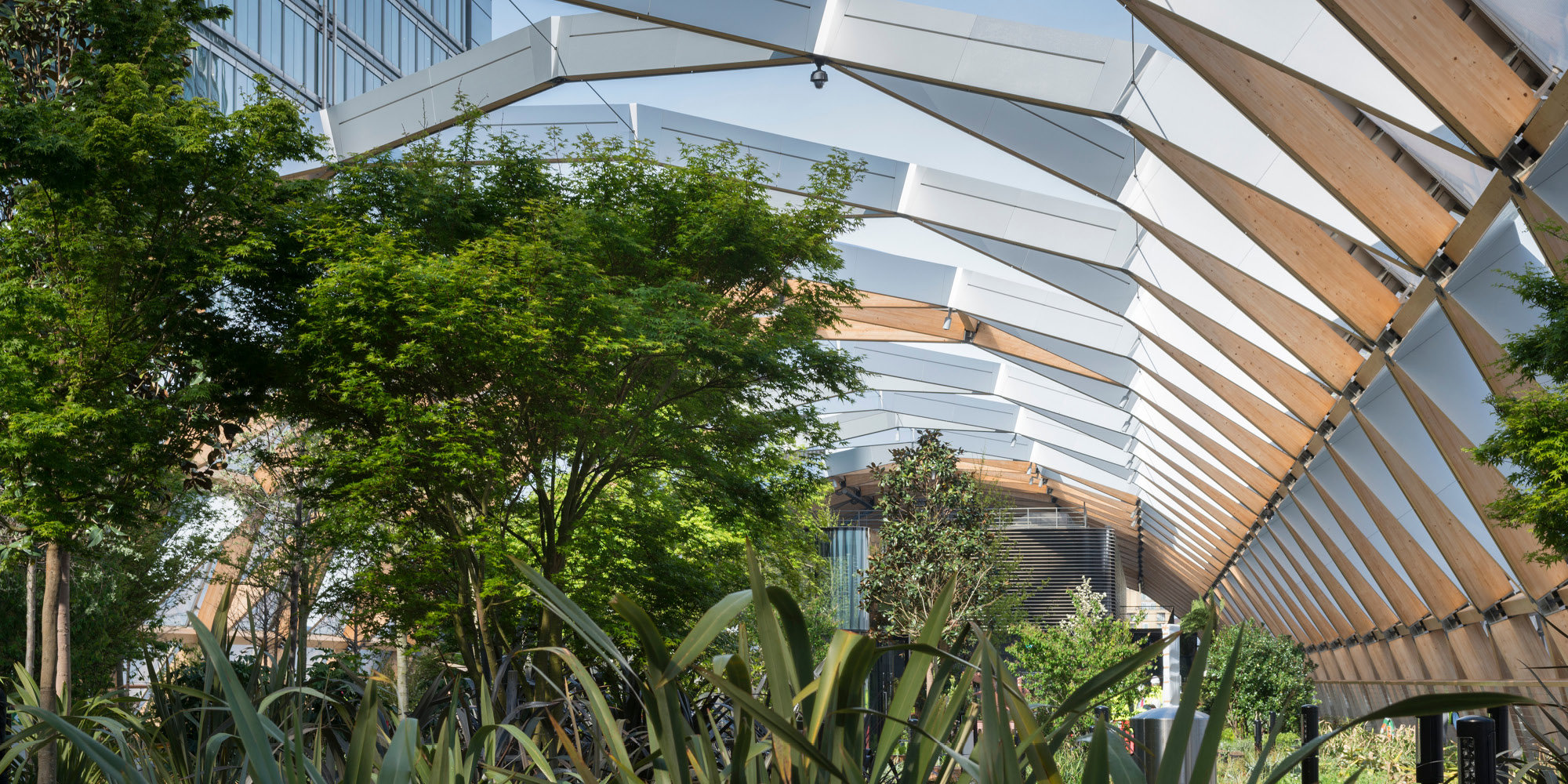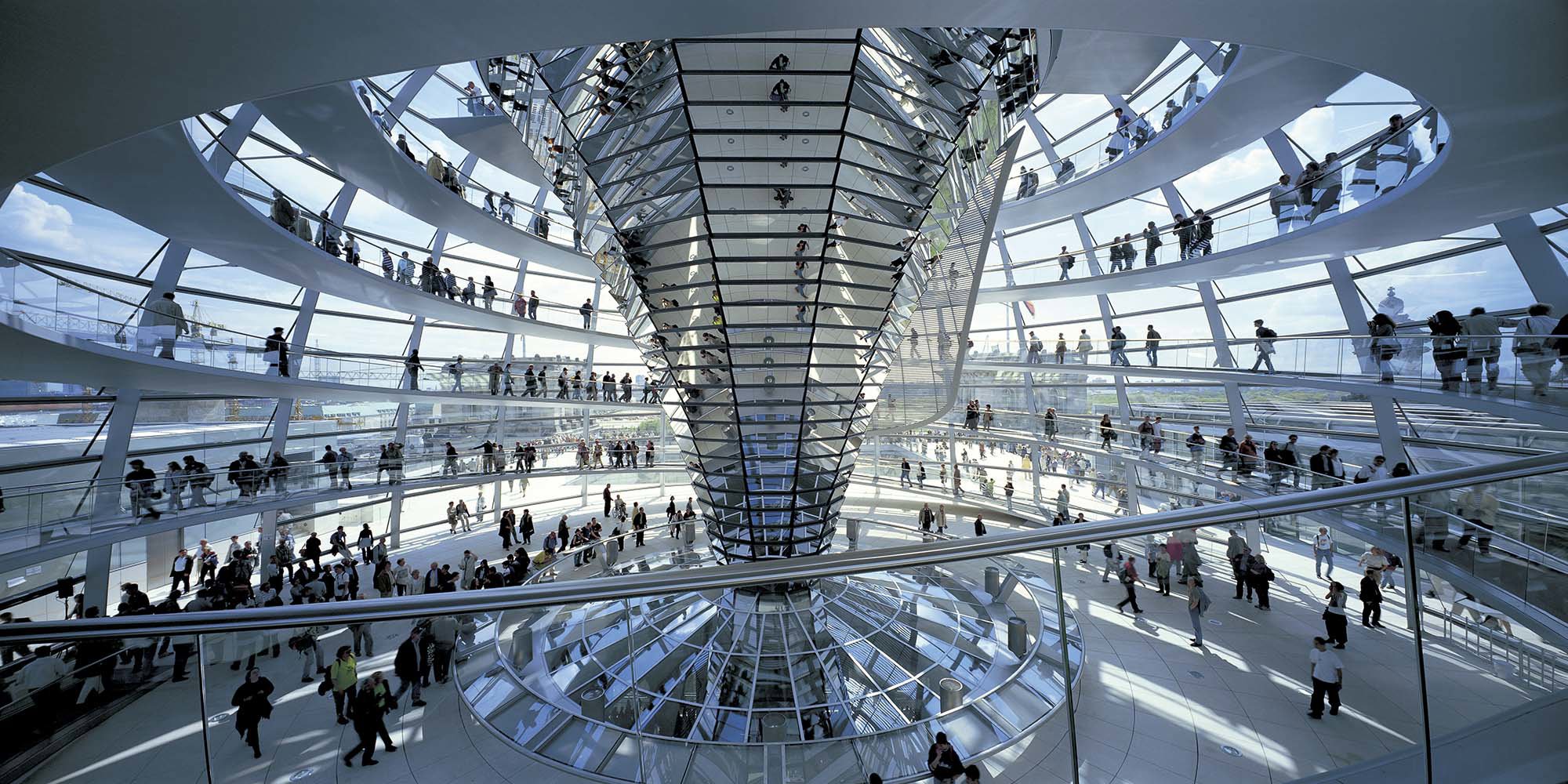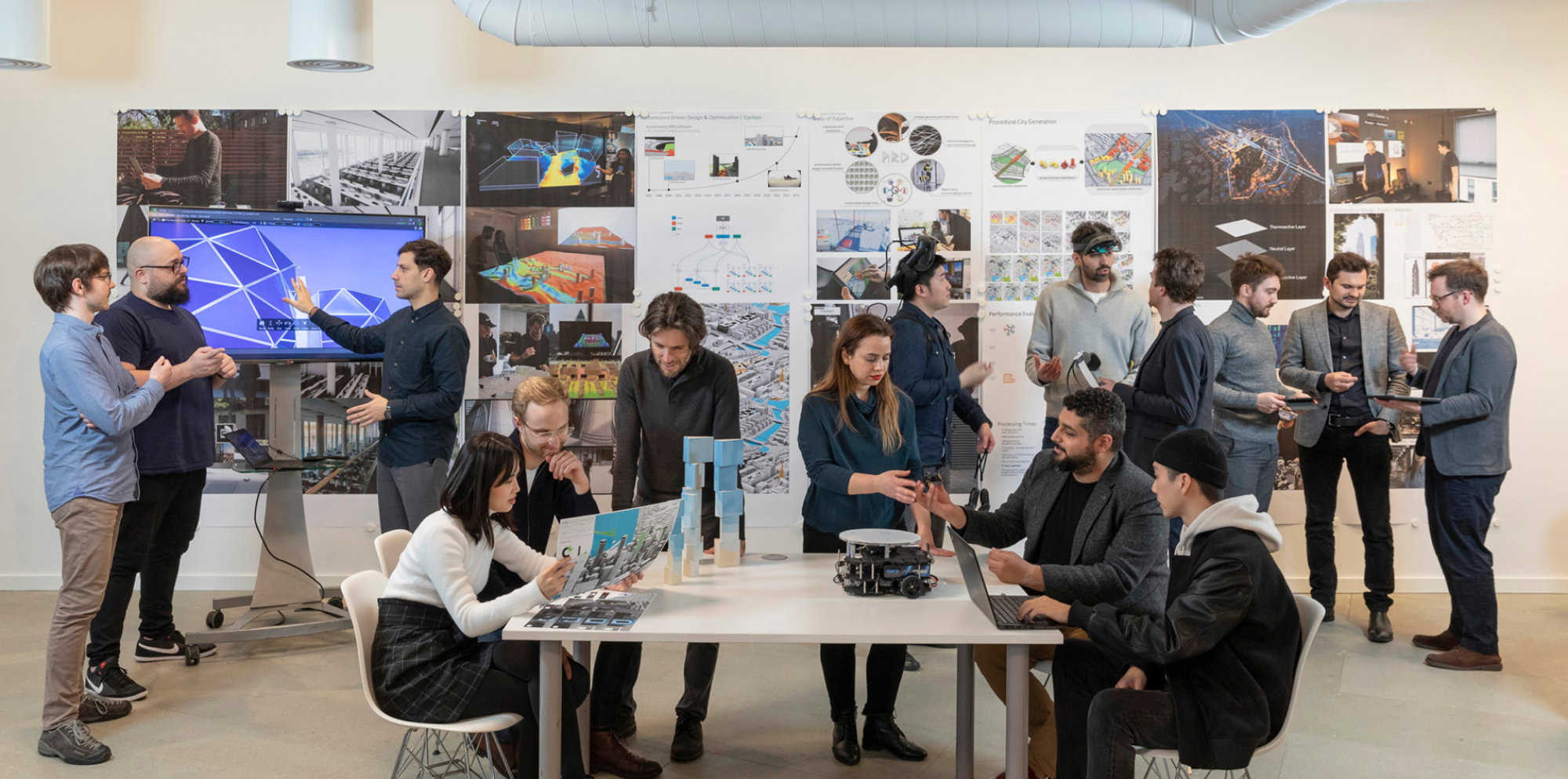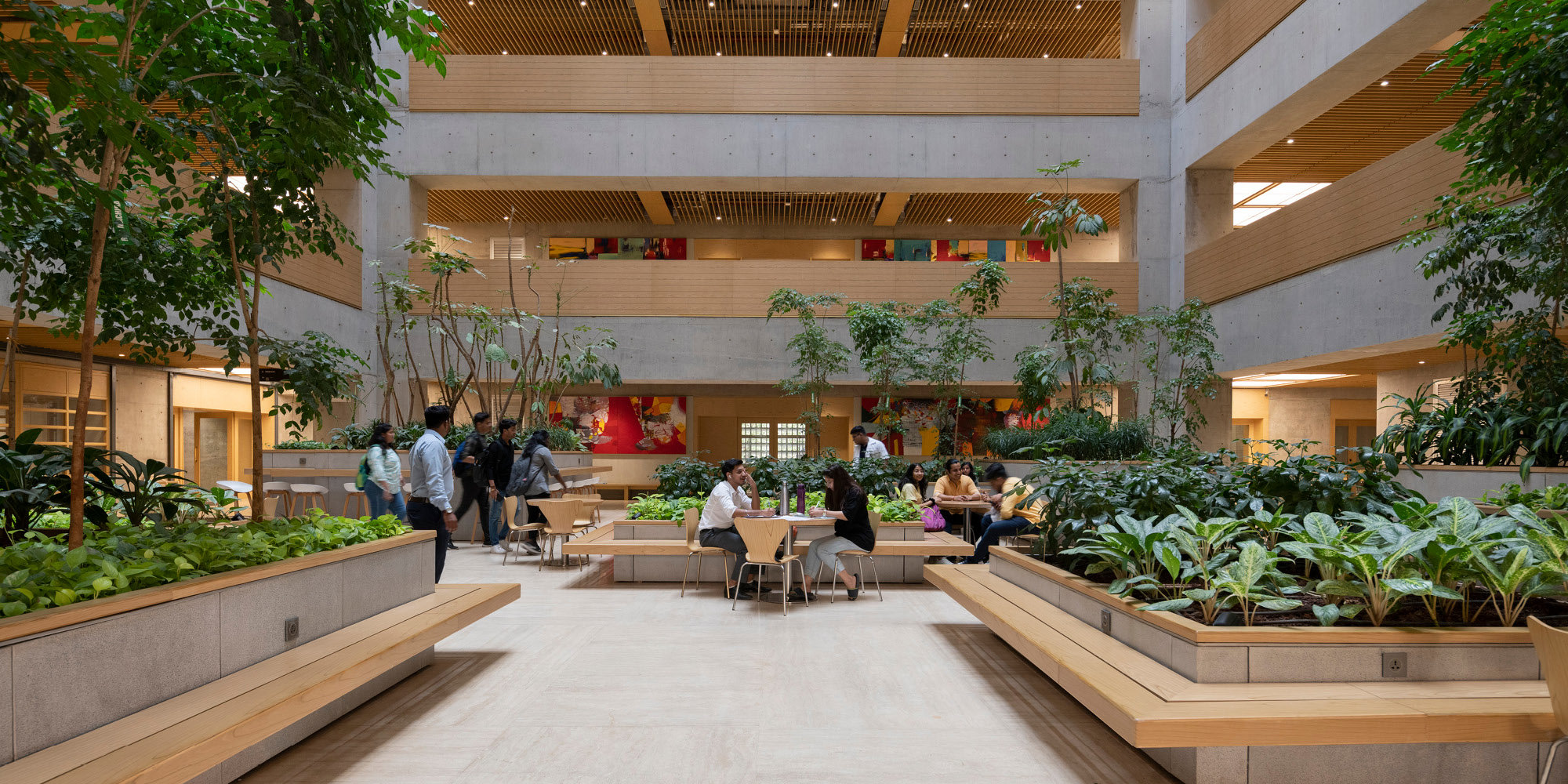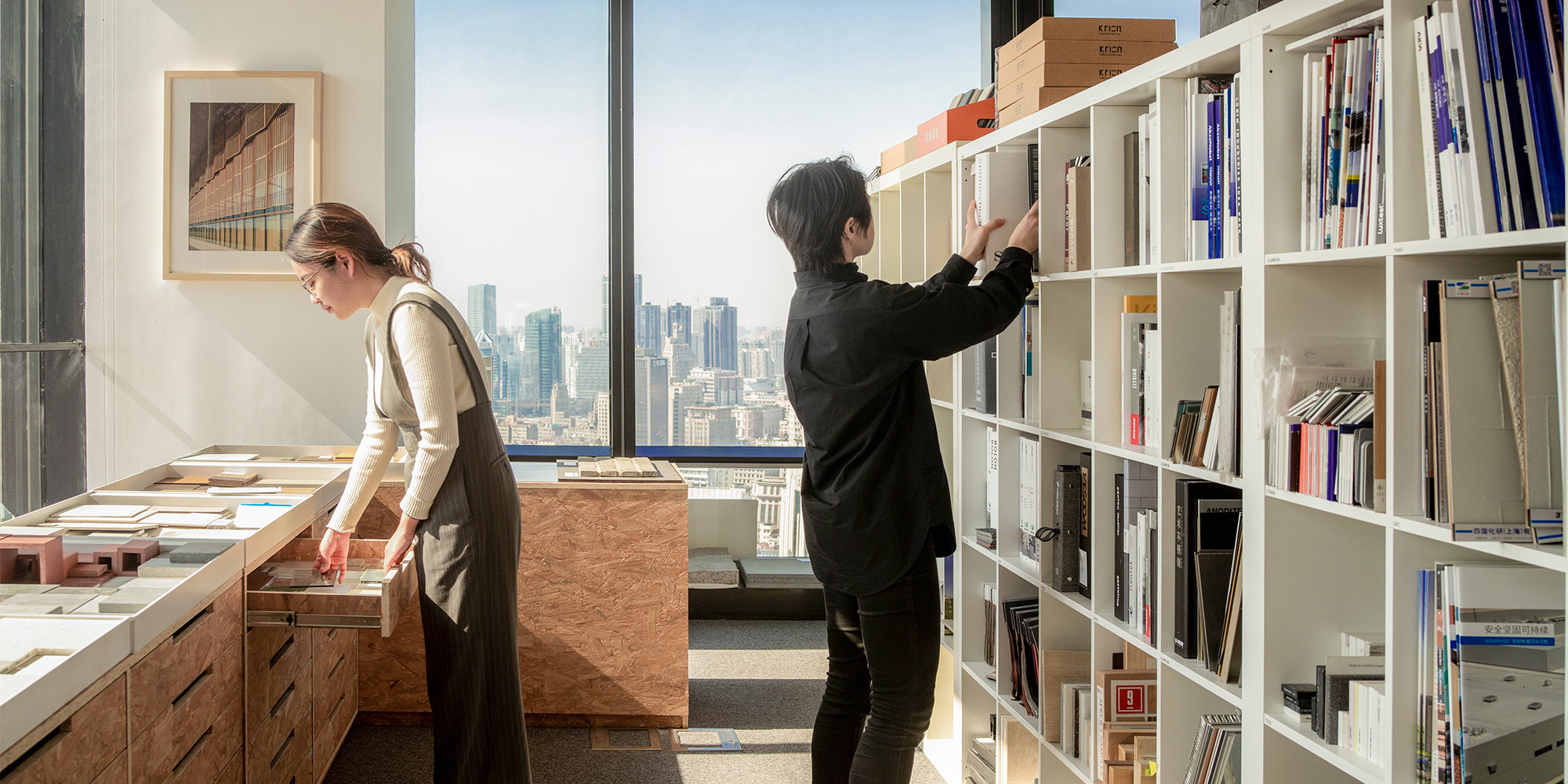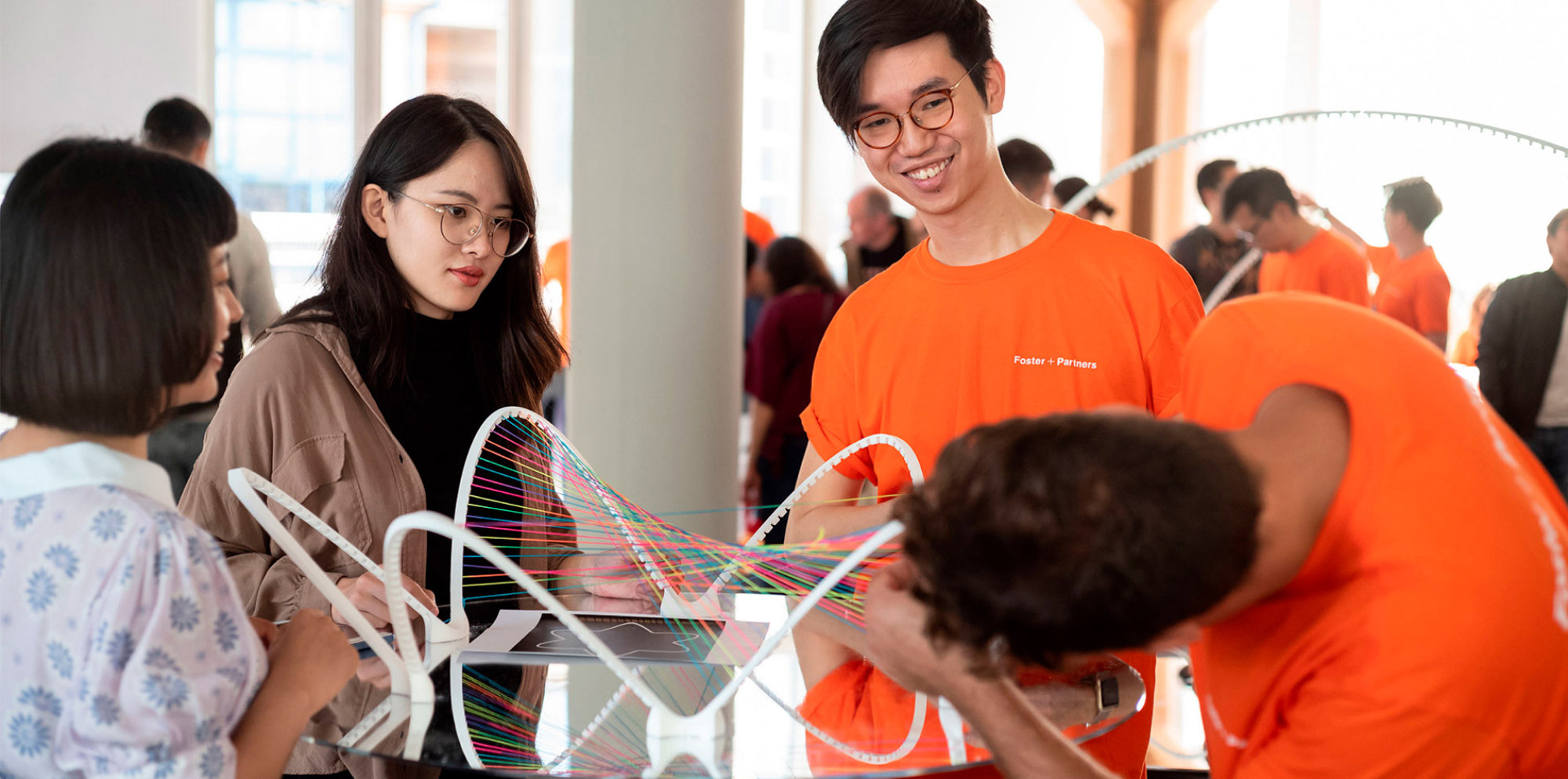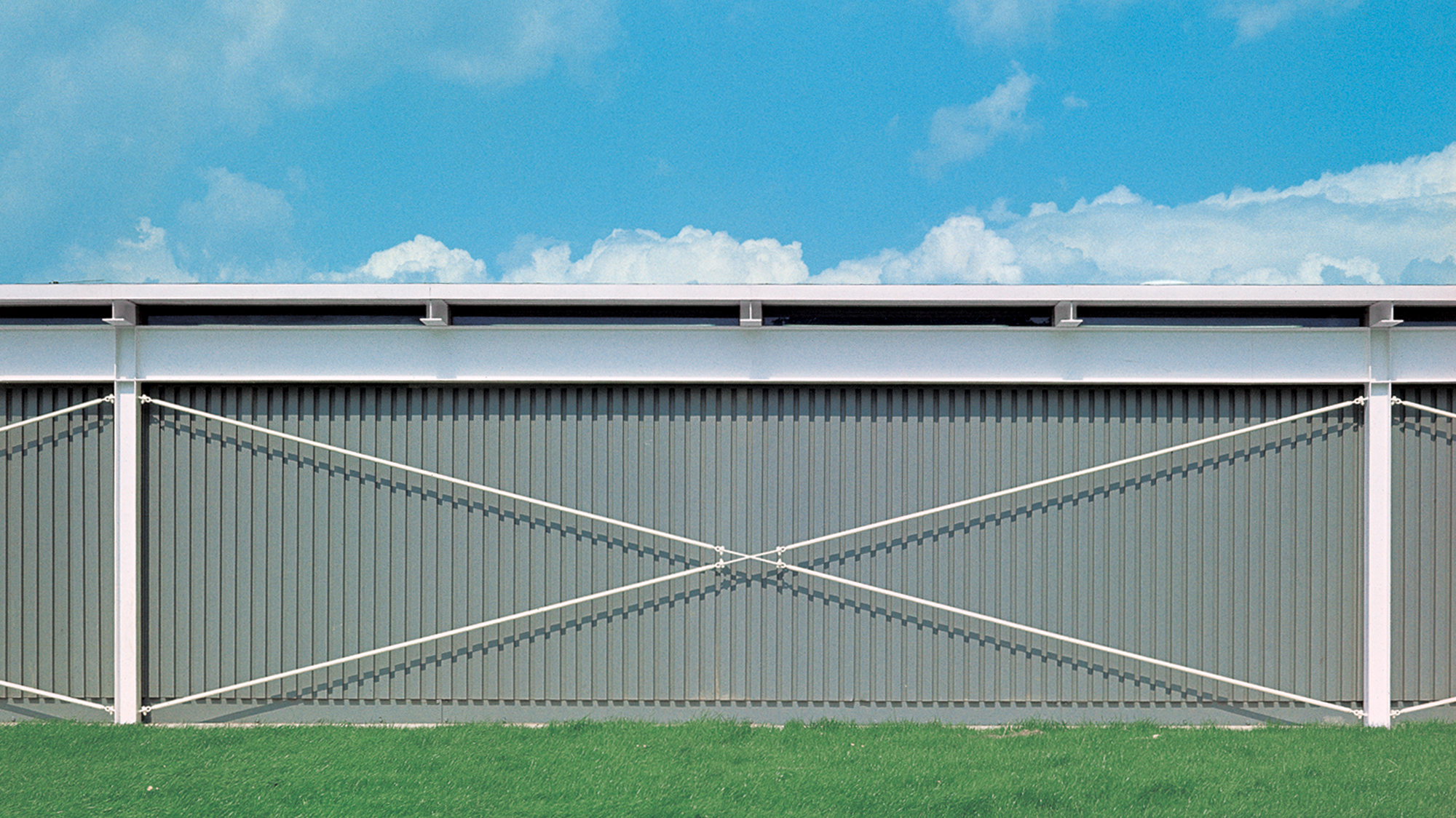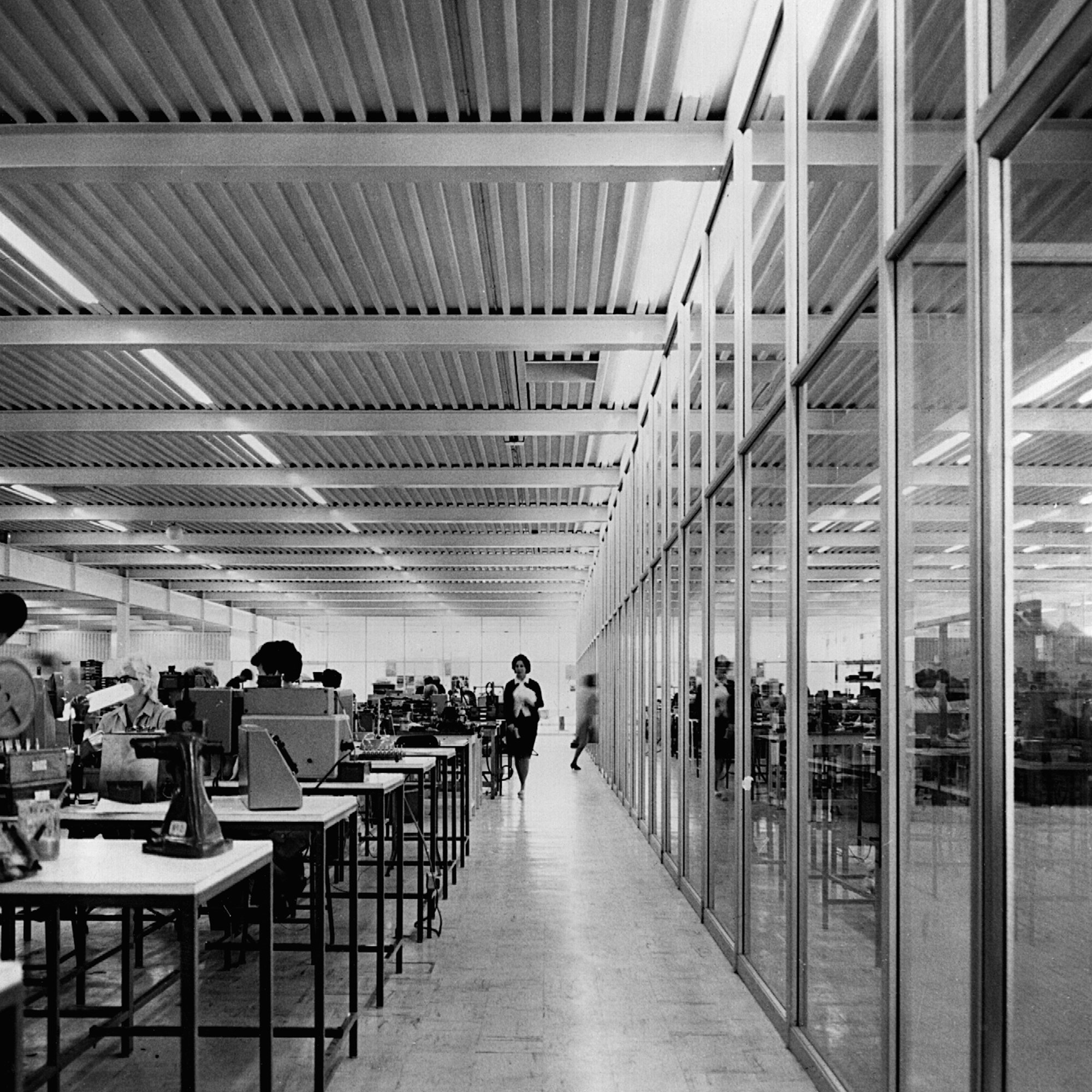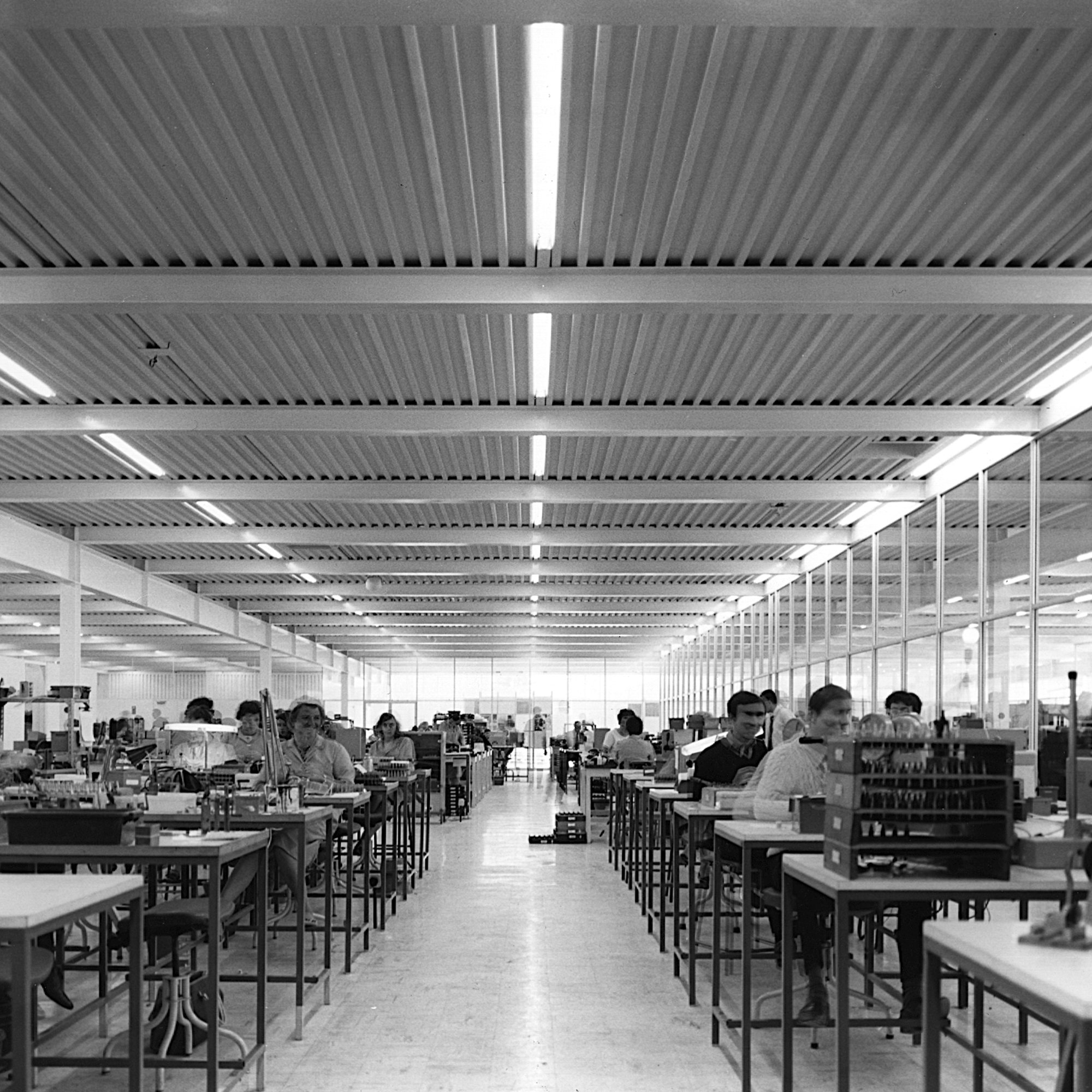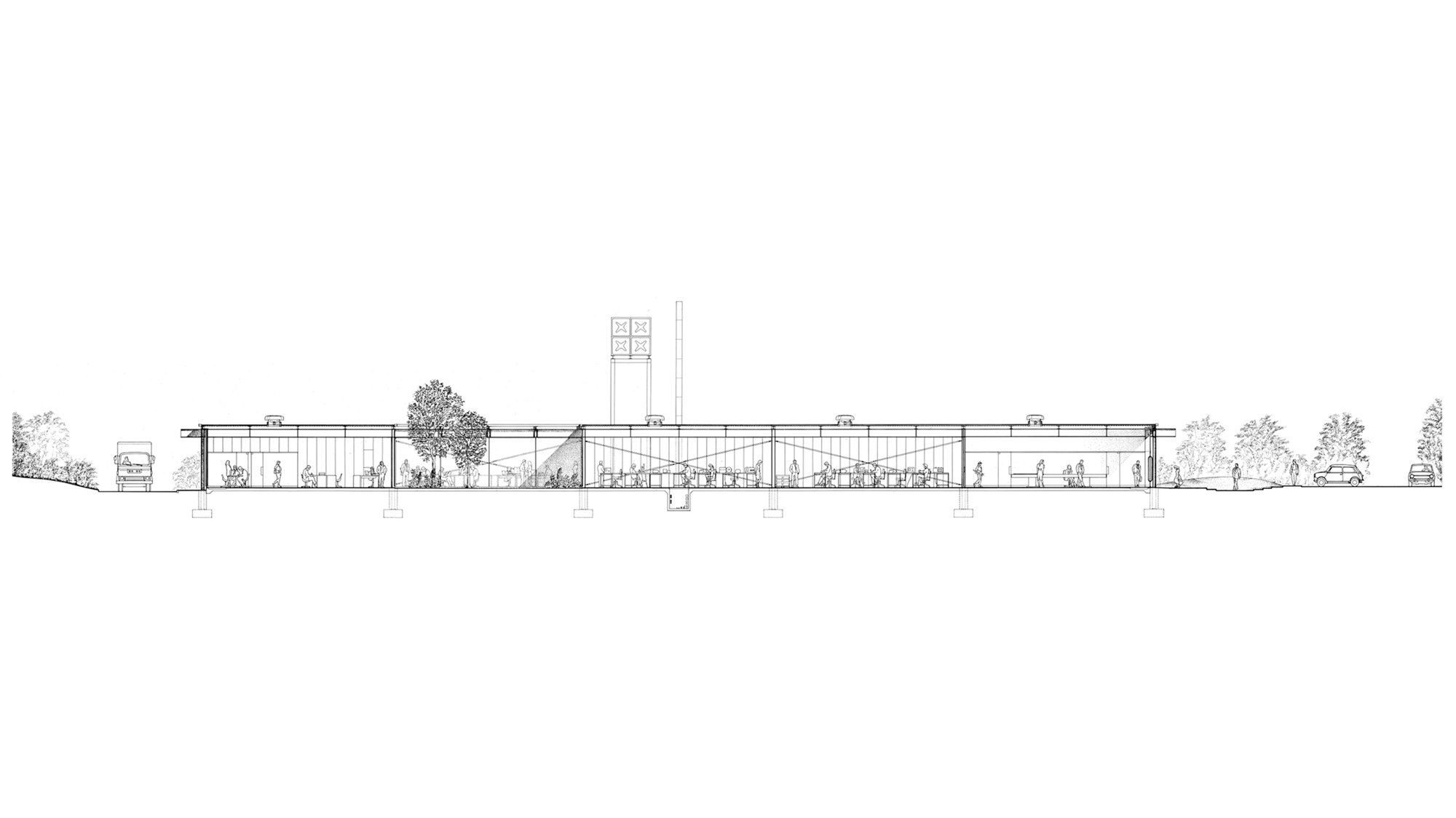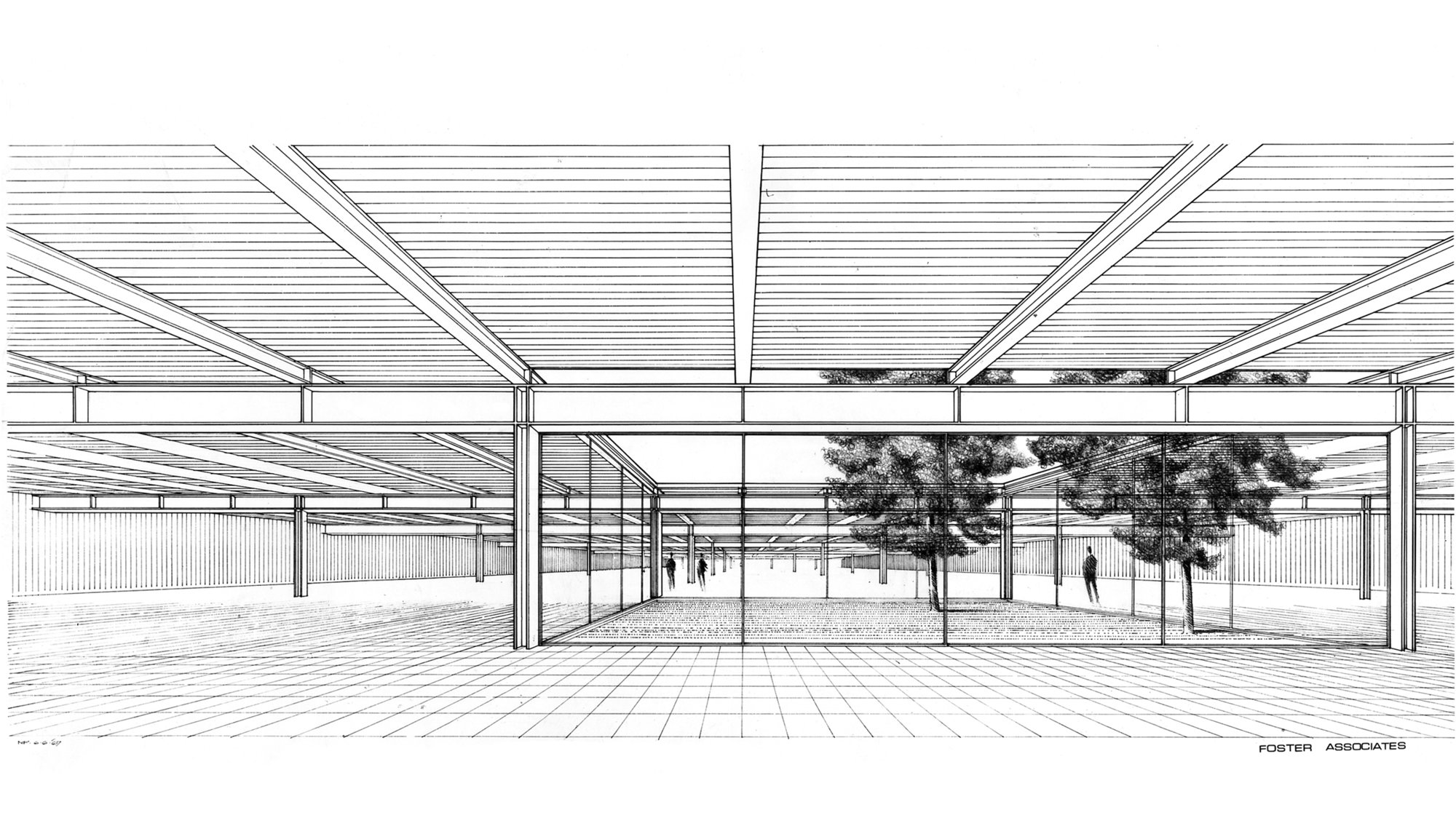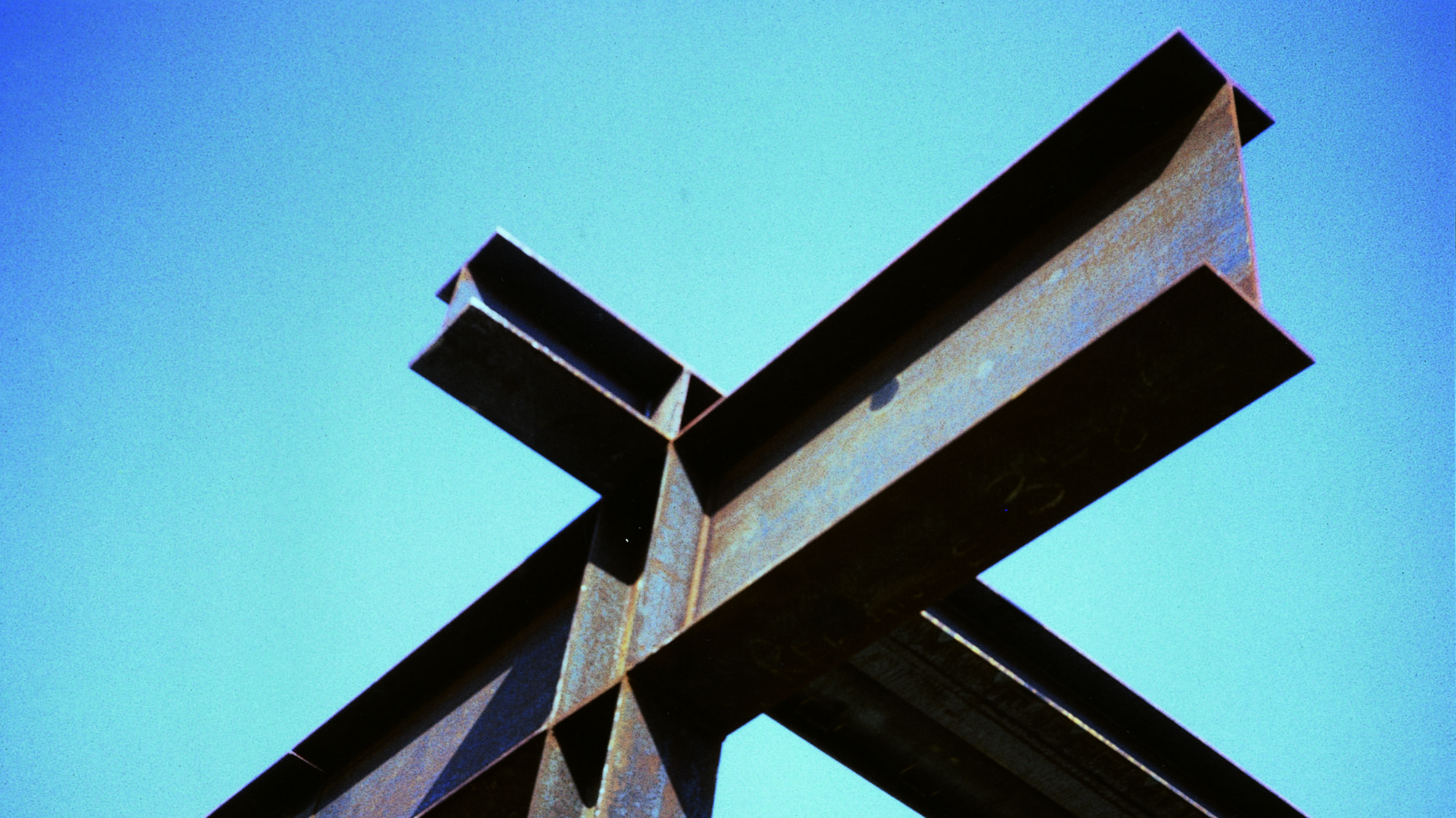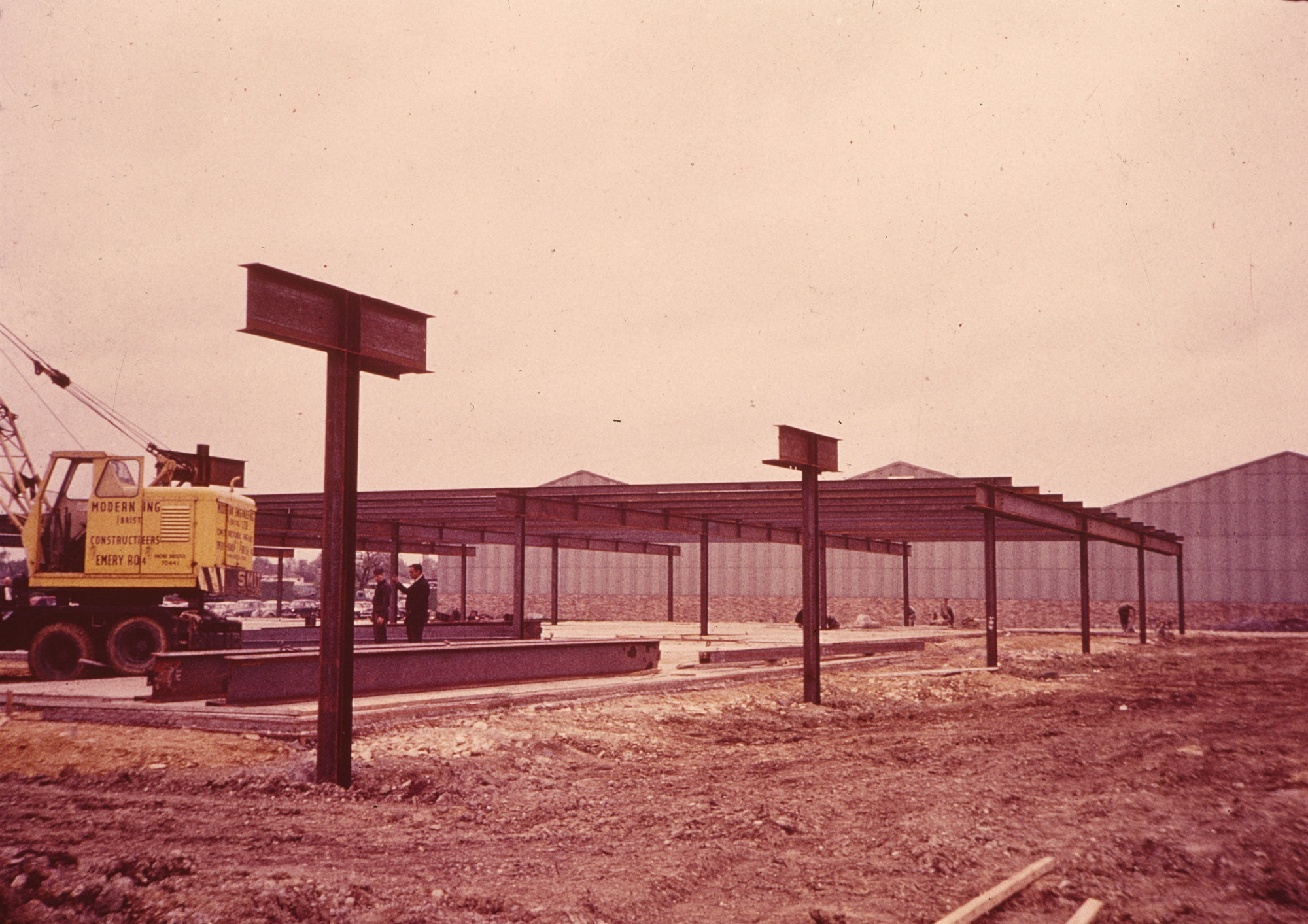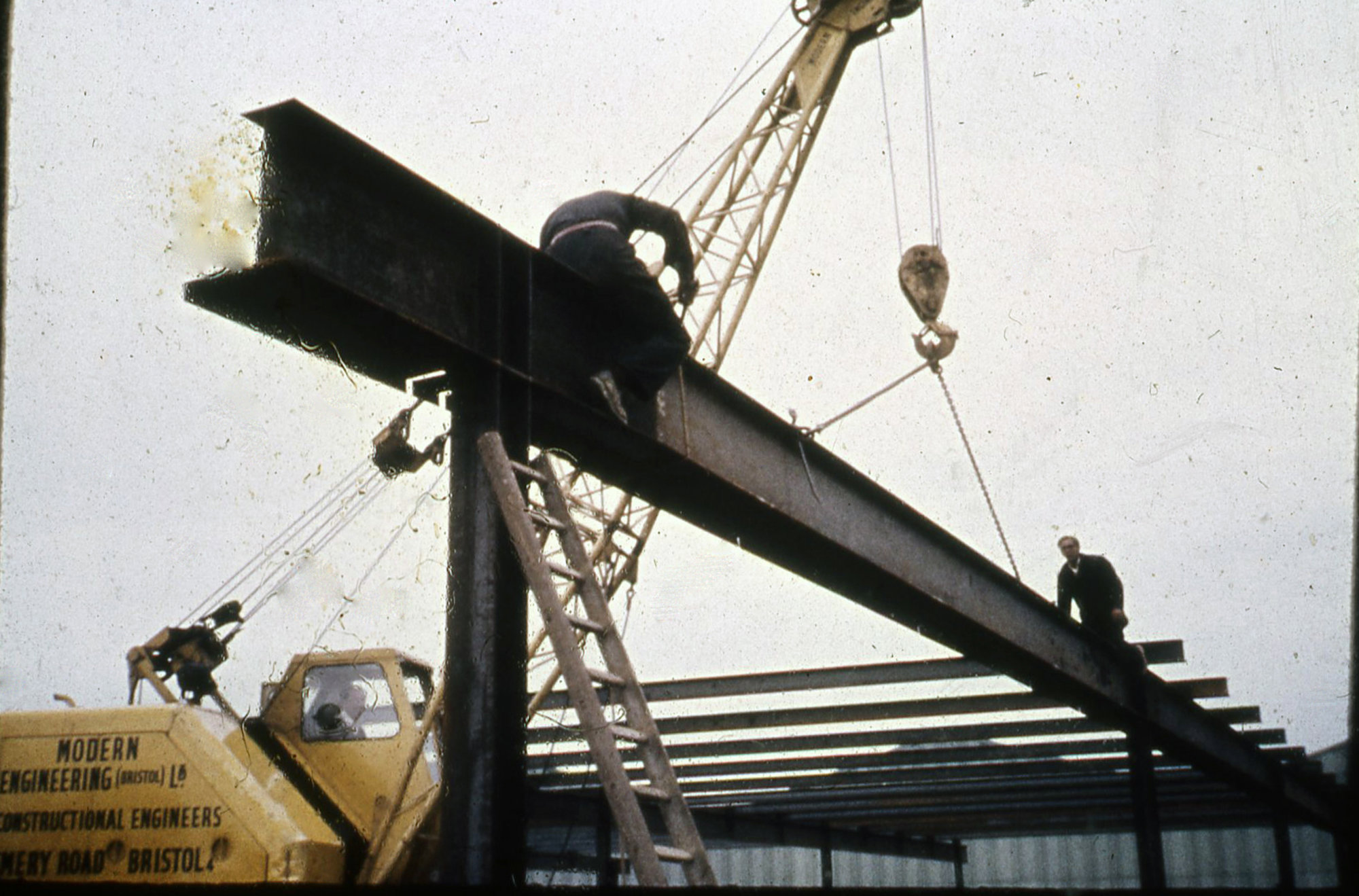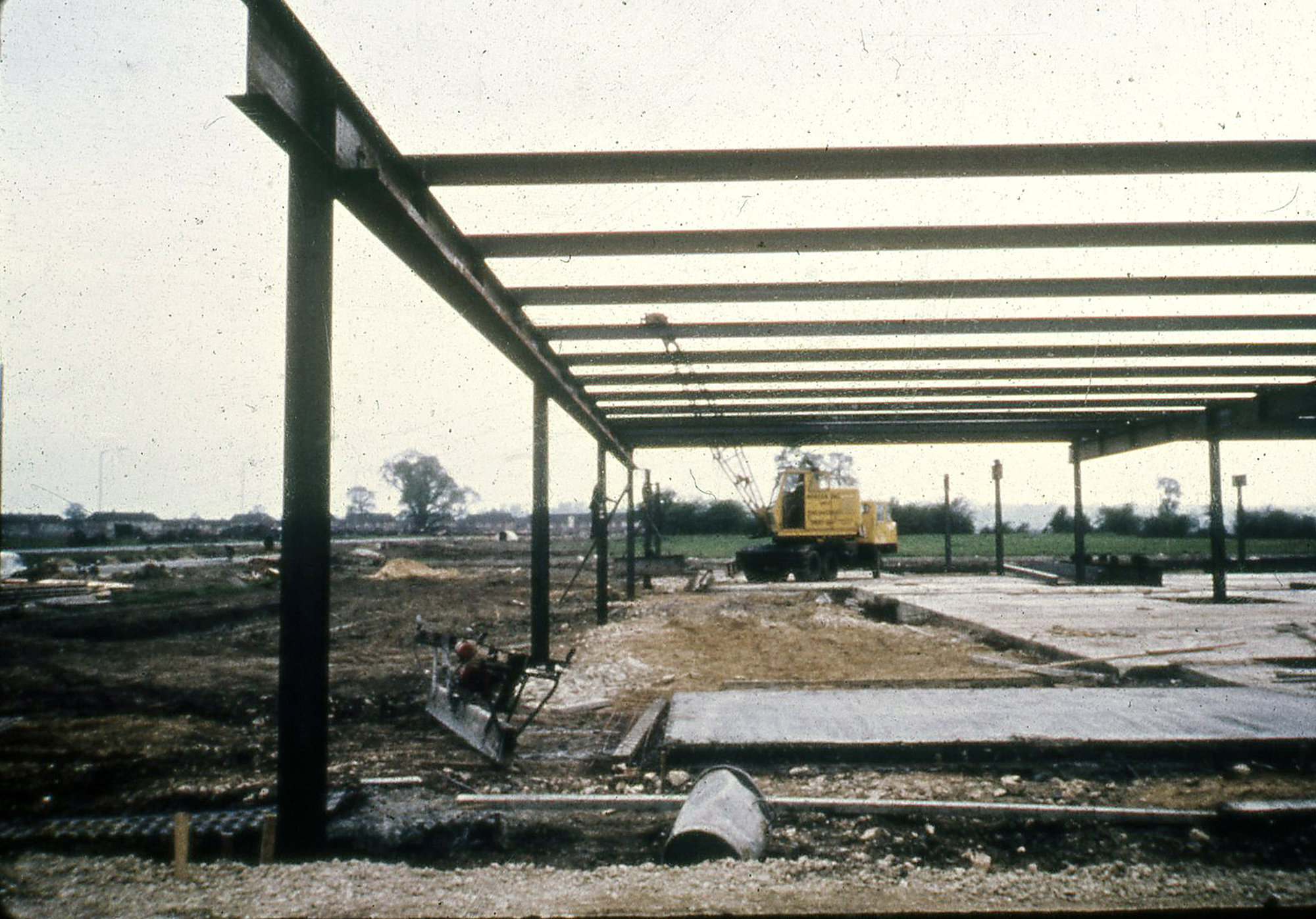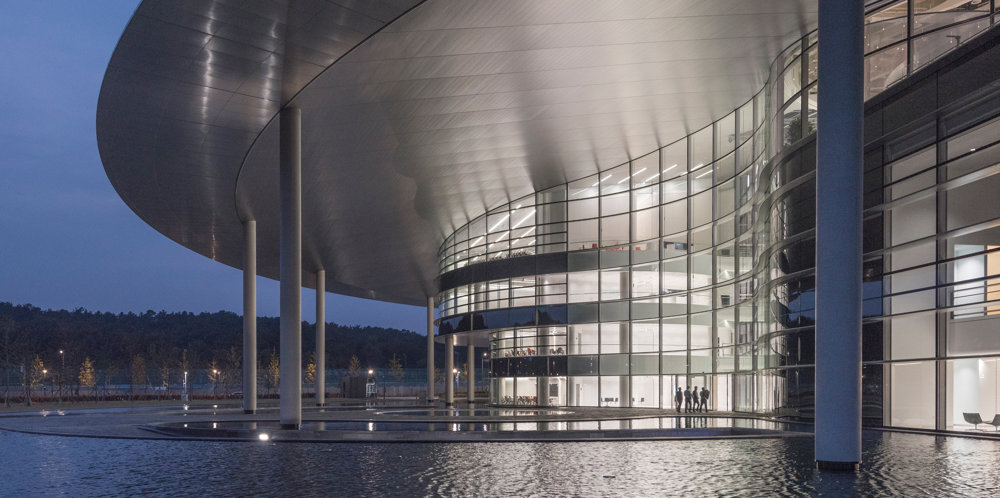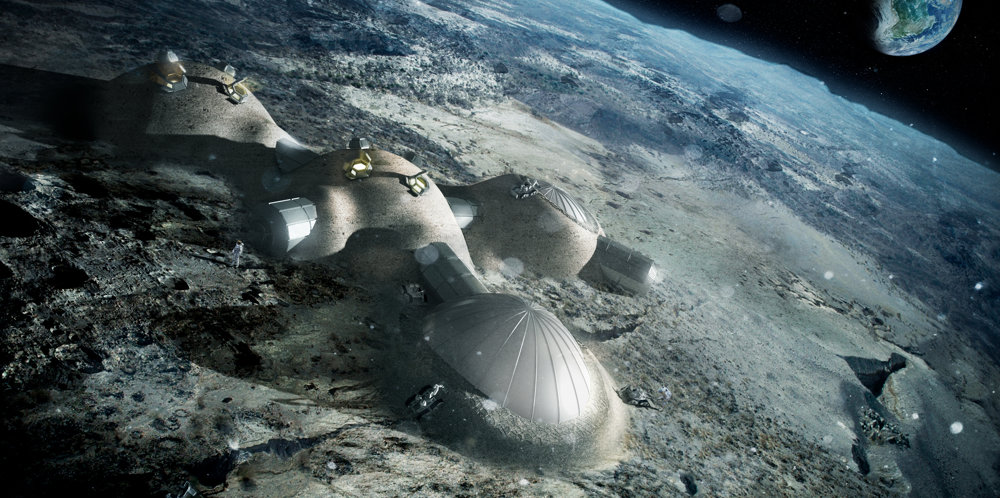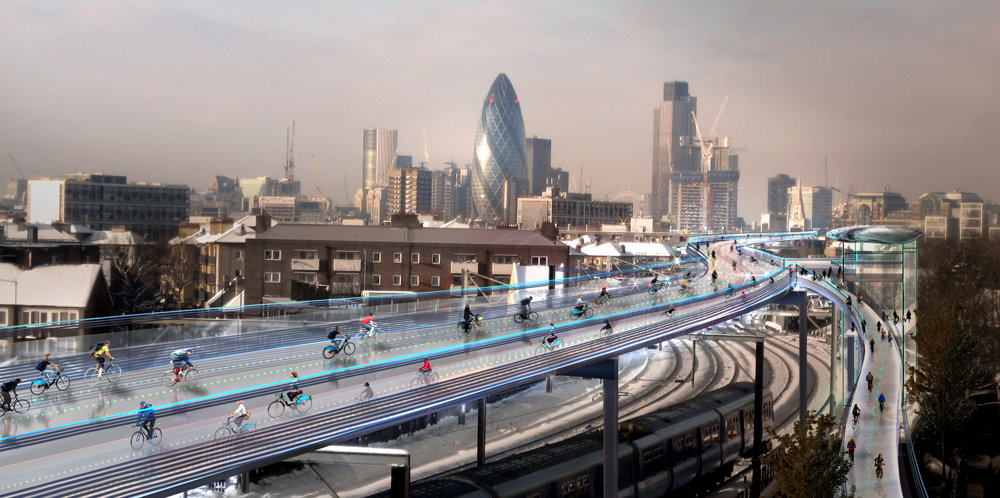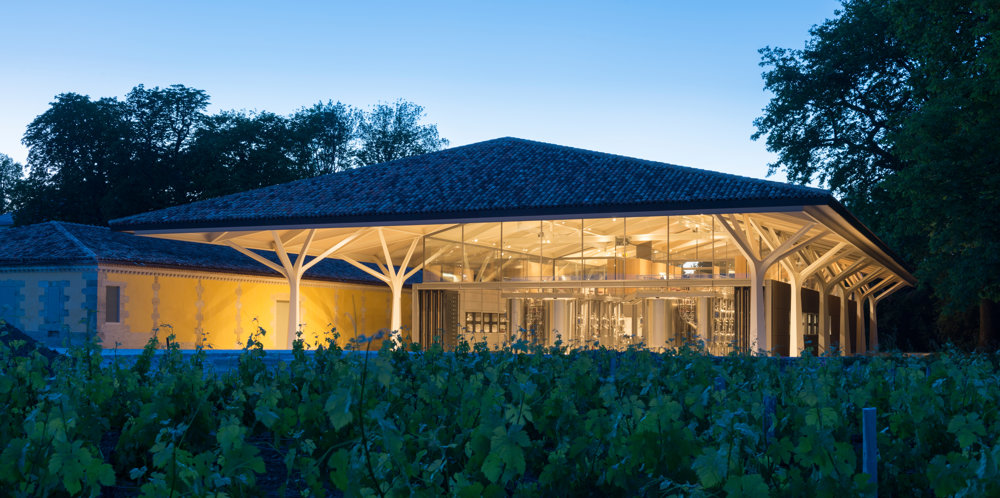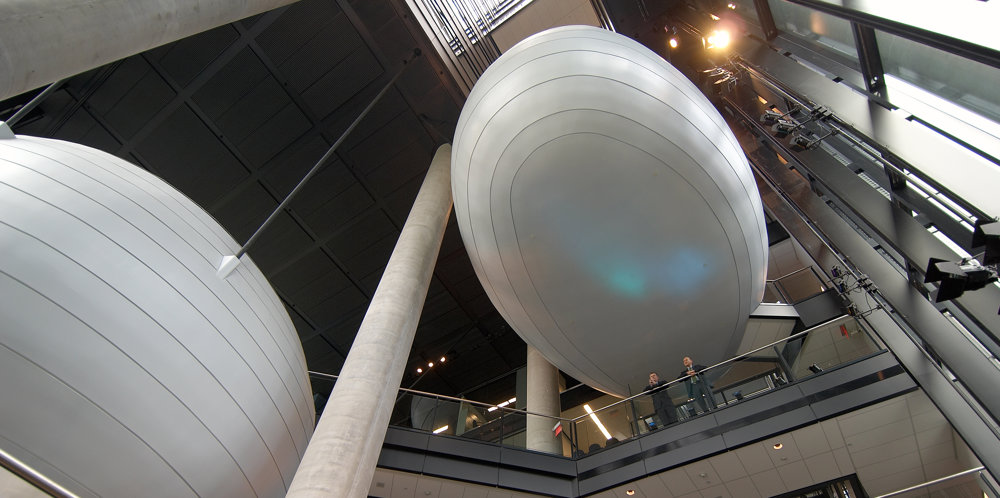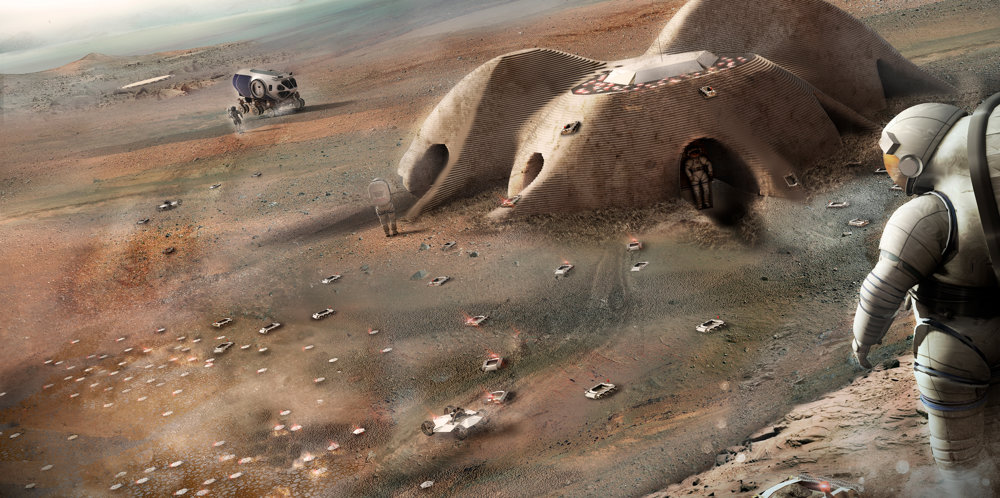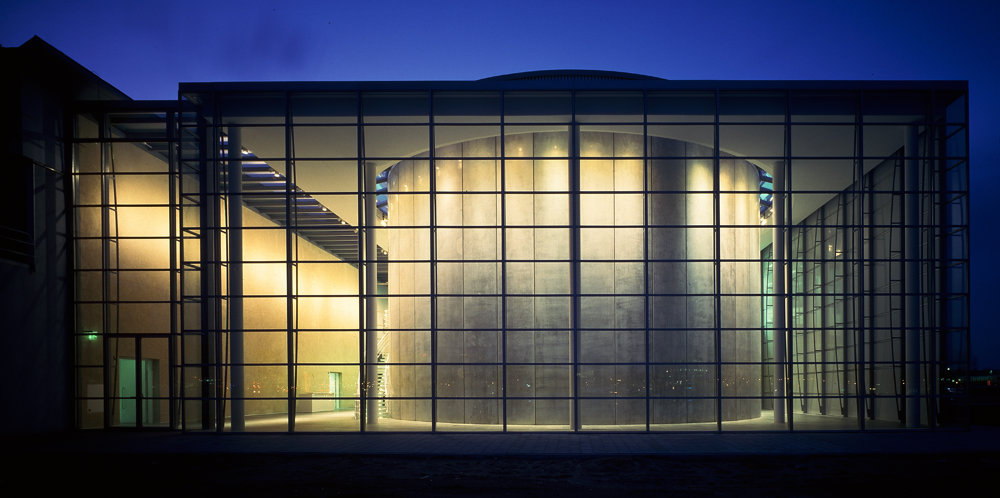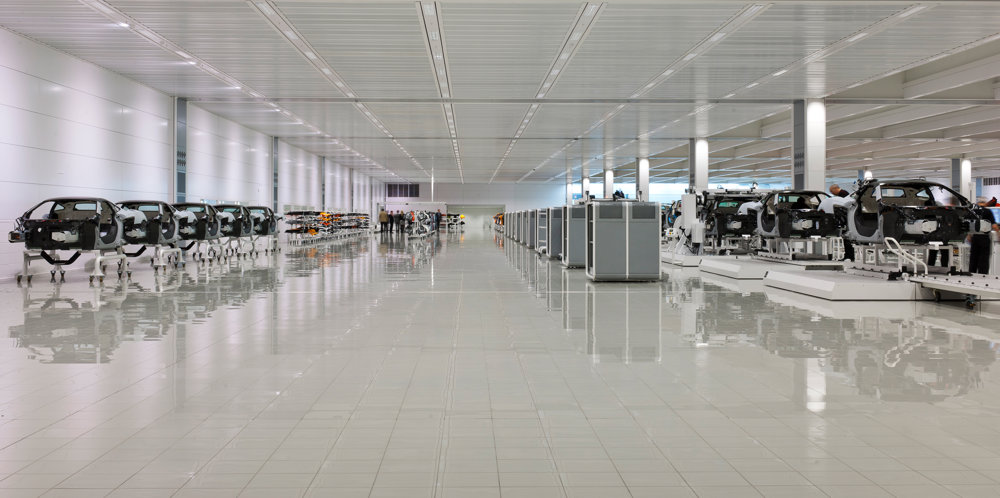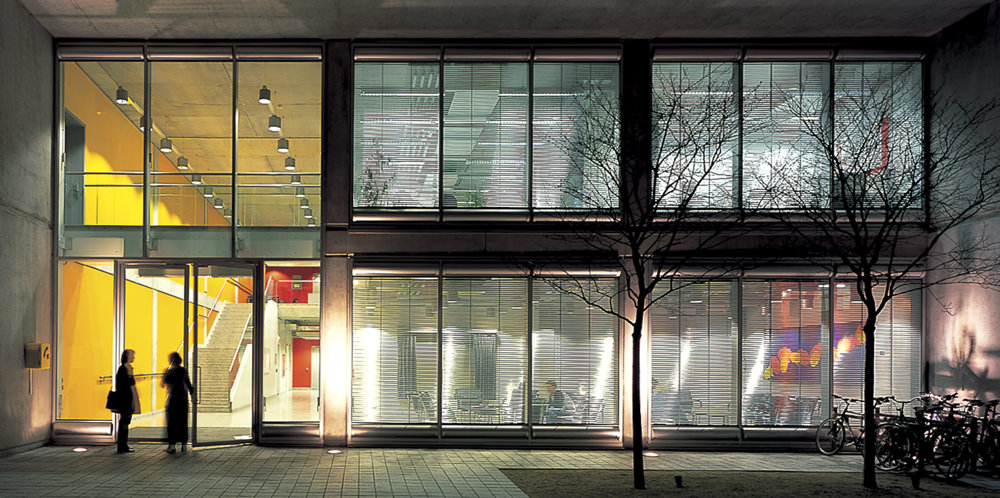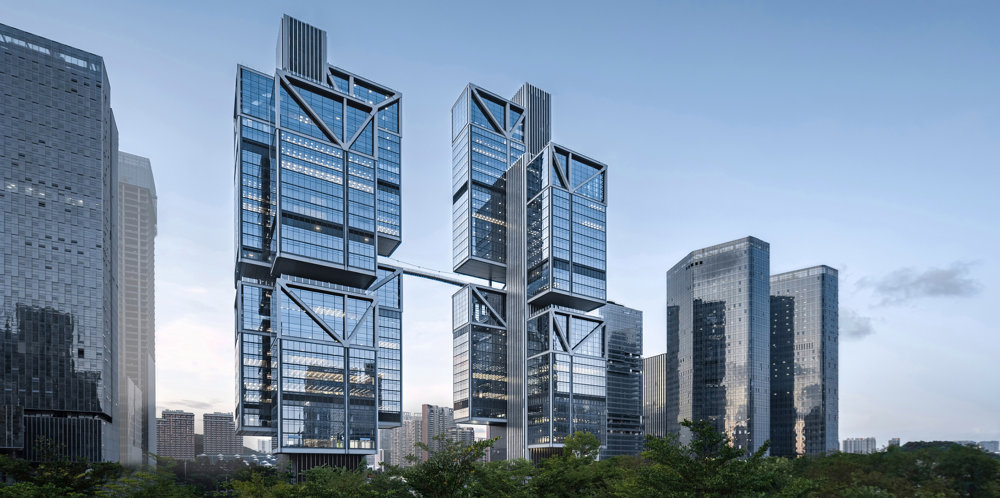In the 1960s there was still a strong tradition in industrial architecture of the segregated management box and workers' shed with their overtones of 'us and them', 'clean and dirty', 'back and front'. At the Reliance Controls Factory, Team 4 sought to introduce a radical new approach. The result was a democratic pavilion where management and employees shared a single entrance and a single restaurant, a practice unheard of at the time. With the electronics industry then in its infancy, the building was regarded as a light-industrial prototype, its organisation and design implying new democratic standards in the workplace.
The building's emphasis on prefabricated metal components allowed the structure to be built in less than a year at very low cost. The structural steelwork was celebrated both inside and out, indeed the structural members were painted white to contrast with the grey, plastic-coated, corrugated-steel cladding.
Wherever possible, elements were designed to do double or even triple duty: for example, the fluorescent lighting was set within the troughs of the corrugated roof decking - a solution which meant that reflectors were unnecessary. The steel frame enclosed a single open space of 3,200 square metres, within which only the toilets, kitchen and plant room were fixed in place. Much of the rest of the accommodation could be changed at will by moving the non-structural internal partitioning. This latent flexibility paid off when the client, in a sudden production surge, was able, unaided, to increase his production area by 33 per cent.
The building was the winner of the first Financial Times Industrial Architecture Award. In its report the jury said: 'Its uncompromising simplicity and unity of general conception and detailed design create an atmosphere that is not only pervasive but notably comfortable to be in. It is refreshing to find something so beautifully direct that it looks like a lost vernacular.'
Completed in 1966, Reliance Controls was the last major project before the break-up of Team 4 and the founding of Foster Associates. The building was demolished in 1991 despite a televised local appeal for its preservation because of its originality and historical importance.
